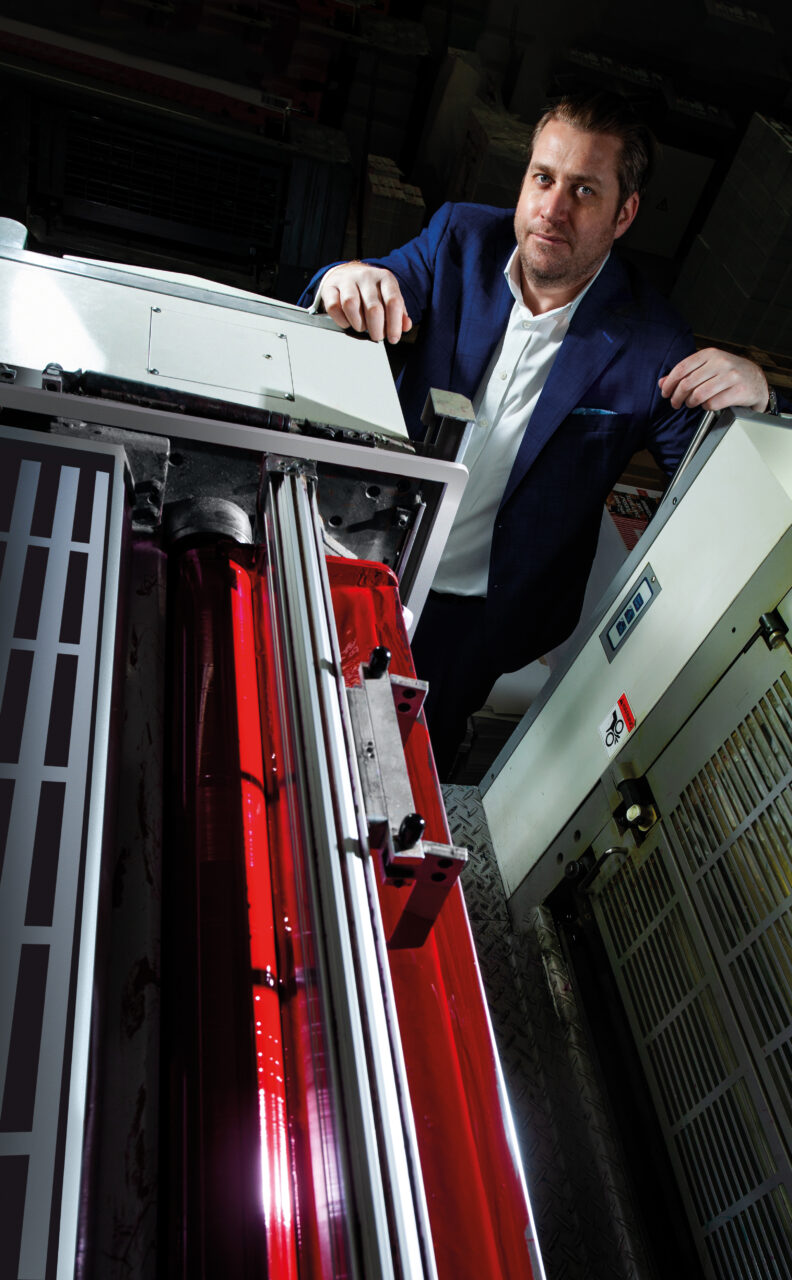‘This change began in 1996 when we found out how damaging the printing industry was for the environment. Litho printing uses huge amounts of water. The water isn’t wet enough so we have to pollute it with chemical additives that contain health-threatening Volatile Organic Compounds (VOCs). So we went to Japan to find out about waterless printing technology which uses different printing plates that eliminate water from the process. This means the inks are undiluted and richer on the page. It’s higher quality print with a significantly reduced environmental impact. We developed our own press with the Japanese manufacturer Sakurai which also uses LED drying technology – so the print is instantly dry and the images sharper on the page. We developed our own inks to work with the technology. You can’t be an environmental printer if you’re not printing waterless: our printing process uses 100 per cent less water, 100 per cent VOC-free inks and is 100 per cent chemical free. Our factory has zero “waste to landfill”, runs on 100 per cent renewable energy and is carbon neutral. We even have on-site wormeries munching through our organic waste.
‘But what we could achieve internally wasn’t enough. Ninety-five per cent of our carbon impact comes from our supply chain. So we looked in detail at the production of the paper, printing plates and inks we buy and took responsibility for our total carbon impact. Around 65 per cent of our clients specify paper with recycled content. We’ve mapped everything. You need to measure your impact and then you need to ask how are you are going to improve it.
‘We were always trying to do less harm … but in the face of the climate crisis we need to do more good. Our carbon offsets are invested in projects that stop carbon coming into the atmosphere at source. We have a positive impact: we take out ten per cent more carbon than we create. In terms of businesses (not just printing) we are at the vanguard: one that gives back to the environment more than it consumes.
‘When we speak to clients, we explain how working with us can demonstrate that their brand believes in leadership. We work for people that “get it”, people who understand that everything you do either has a positive or a negative impact. There is no “in between”. You’re either part of the problem or you’re part of the solution and the people we work with want to be part of the solution.’


